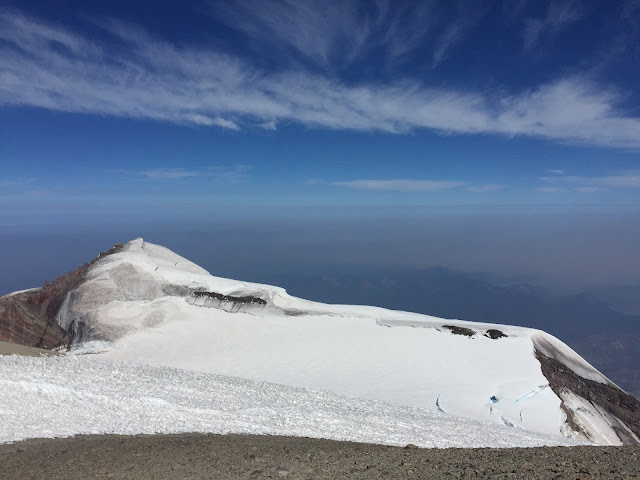Here is a quick note on conditions. As calendar winter approaches people may be considering a winter attempt of the summit. A ranger went up to Camp Muir today to have a look at condition on the upper mountain.
We have had unseasonably nice weather recently and this has not done the mountain much good in terms of climbing conditions. The rain event that started on Thanksgiving was warm enough to have that rain go all the way to the summit. This produced a think ice crust all over the volcano. A few storms coated the mountain with more snow and covered the ice but the recent high pressure and windy conditions have scoured the snow off the steeper slopes. That has resulted in large patches of exposed blue ice over much of the upper mountain.
Some photos from the Muir Snowfield and Camp Muir.
So for now the upper mountain would be extremely difficult and hazardous to climb. Even moving around Camp Muir requires crampons. The weather pattern is shifting though and we expect more snow to start arriving on Friday.
We have had unseasonably nice weather recently and this has not done the mountain much good in terms of climbing conditions. The rain event that started on Thanksgiving was warm enough to have that rain go all the way to the summit. This produced a think ice crust all over the volcano. A few storms coated the mountain with more snow and covered the ice but the recent high pressure and windy conditions have scoured the snow off the steeper slopes. That has resulted in large patches of exposed blue ice over much of the upper mountain.
Some photos from the Muir Snowfield and Camp Muir.
 |
| There are visible ice patches on Gibraltar Ledges and at the top of Gib Chute. |
 |
| The Cowlitz Headwall with exposed ice all over. |















































